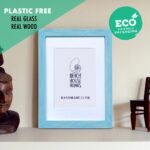I. Understanding Upcycled Food Preservation: What It Is and Why It Matters
II. Techniques for Extending Shelf Life of Upcycled Foods
III. Benefits of Upcycled Food Preservation: Reducing Waste and Enhancing Sustainability
Understanding Upcycled Food Preservation: What It Is and Why It Matters
Hey there, food lovers! Today, we’re diving into a fascinating concept that’s not only good for your kitchen but also great for our planet: upcycled food preservation. You might be wondering, “What in the world is that?” Well, buckle up, because we’re about to explore what it means, how it works, and why it’s a game-changer in our fight against food waste!
What is Upcycled Food Preservation?
At its core, upcycled food preservation refers to the process of taking food that might otherwise be considered waste—like overripe fruits, vegetable scraps, or even stale bread—and transforming it into something delicious and valuable. Instead of throwing these items away, we’re giving them a second life!
For instance, those overripe bananas you’ve been avoiding can be mashed up into banana bread or pancakes. Vegetable peels? They can be turned into crunchy chips or flavorful broths. You see, it’s all about creativity and resourcefulness in the kitchen. Imagine the possibilities!
Why Does It Matter?
Now, you might be asking yourself, “Why should I care about upcycling food?” Well, here are a few compelling reasons:
- Reducing Food Waste: Did you know that approximately one-third of all food produced globally is wasted? That’s a staggering statistic! By upcycling, we’re actively participating in reducing this waste, which is a major contributor to greenhouse gas emissions.
- Sustainability: Upcycling food is a sustainable practice that promotes environmental stewardship. It encourages us to think more critically about the resources we use and how we can maximize them. Every little bit counts, right?
- Creativity in Cooking: Upcycling food allows you to get creative in the kitchen. It’s a fun challenge to see how you can transform what might seem like “scraps” into gourmet meals. Plus, it can spark new culinary ideas!
- Cost-Effective: By using what you already have, you save money! You’re less likely to need to buy new items when you can use what’s already in your pantry or fridge.
Connecting with the Community
Another fantastic aspect of upcycled food preservation is how it can bring communities together. Community gardens and local food co-ops often embrace this concept, hosting workshops and events that teach people how to preserve food creatively. It’s a chance to meet like-minded individuals who share your passion for sustainability and delicious food.
Moreover, the rise of upcycled food products in local markets is a testament to its growing popularity. Many entrepreneurs are diving into this trend, creating amazing snacks and condiments using ingredients that would otherwise go to waste.
In Conclusion
In a nutshell, upcycled food preservation is all about turning what could be waste into something wonderful. It’s not just a trendy catchphrase; it’s a powerful movement that promotes sustainability, creativity, and community engagement. So, the next time you find those sad-looking veggies in your fridge, remember: they could be the star of your next meal!
Techniques for Extending Shelf Life of Upcycled Foods
So, you’ve decided to give upcycled food preservation a go—great choice! It’s not only a fantastic way to cut down on food waste, but it also opens up a world of possibilities for extending the shelf life of your favorite foods. Let’s dive into some practical and fun techniques that can help you make the most out of your upcycled food items!
1. Fermentation
Fermentation is such a cool method, and it’s been around for ages! Think about how delicious kimchi or sauerkraut is. You can upcycle all sorts of leftover veggies by fermenting them. Here’s how:
- Gather your ingredients: Use those slightly wilted veggies, like cabbage, carrots, or radishes.
- Prepare your brine: Mix water and salt—about 2 tablespoons of salt for every quart of water usually does the trick.
- Combine: Pack your veggies tightly in a jar, pour the brine over them, and make sure everything is submerged.
- Let it ferment: Seal the jar loosely and let it sit at room temperature for a few days. Taste it until it’s just right!
2. Dehydration
Dehydration is another brilliant way to preserve food. By removing moisture, you can prevent spoilage. Plus, it’s super easy!
- Choose your food: Leftover fruits, veggies, or herbs work perfectly.
- Slice them up: Cut your food into uniform pieces for even drying.
- Dry them out: You can use a dehydrator, your oven on low heat, or even air-dry them in a warm spot.
- Store them right: Keep your dehydrated goodies in airtight containers away from light and moisture.
3. Jamming and Marmalading
Who doesn’t love a good jam? If you have leftover fruits that are getting a little too ripe, transform them into delicious spreads!
- Cook it down: Combine your fruit with sugar and a splash of lemon juice in a pot.
- Simmer: Let it cook down until you reach the desired consistency. It’s like magic!
- Jar it up: Pour your jam into sterilized jars, seal them, and store in the fridge or can them for longer storage.
4. Pickling
If you enjoy tangy flavors, pickling is a fantastic option. You can pickle almost anything—cucumbers, radishes, or even leftover fruit!
- Make your pickling brine: Mix vinegar, water, salt, and sugar in a saucepan.
- Prepare your vegetables: Chop them up and pack them into jars.
- Pour the brine: Fill the jars with your brine, making sure the veggies are covered.
- Seal and store: Let them cool, then refrigerate. They’ll be ready in a few days!
These techniques not only help you extend the shelf life of upcycled foods but also add exciting flavors to your meals. It’s all about creativity in the kitchen and making the most out of what you have. Happy upcycling!
Benefits of Upcycled Food Preservation: Reducing Waste and Enhancing Sustainability
Have you ever thought about the amount of food that goes to waste every single day? It’s staggering! But here’s a silver lining: upcycled food preservation can help tackle this issue while also benefiting our planet. Let’s dive into the perks of embracing upcycled food and how it can lead to a more sustainable future.
1. Reducing Food Waste
First and foremost, upcycled food preservation is a fantastic way to reduce food waste. When we upcycle food, we take those odd bits and pieces that might otherwise end up in the trash and find creative ways to use them. Think overripe fruits turned into delicious jams or vegetable scraps transformed into flavorful broths. By doing this, we not only reduce the volume of food waste but also make the most of the resources that went into producing that food in the first place.
2. Conserving Resources
Every time we throw away food, we waste the resources that went into growing, transporting, and processing it, including water, energy, and labor. With upcycled food preservation, we’re making smarter choices that conserve these precious resources. For example, using parts of fruits and vegetables that are often discarded means we’re maximizing what can be harvested and reducing the need for new materials. This is a win-win for both our wallets and the environment!
3. Supporting Local Economies
When you choose upcycled foods, you’re often supporting local farmers and producers who are dedicated to sustainable practices. This can provide a boost to local economies while also fostering a sense of community. By buying upcycled products or participating in local food initiatives, you contribute to a system that values sustainability over mass production. It’s a beautiful cycle that uplifts local businesses while promoting a healthier planet.
4. Promoting Innovation
Upcycling food is all about creativity! It encourages chefs, home cooks, and food entrepreneurs to think outside the box. This innovation can lead to exciting new products and flavors that we might never have considered otherwise. As we embrace this mindset, we open the door to a whole new world of culinary possibilities. Who knew that those fruit peels could become a zesty addition to your dish or that leftover bread could be transformed into croutons? The possibilities are endless!
5. Educating and Inspiring
Finally, upcycled food preservation has the power to educate and inspire others about sustainability and mindful consumption. Sharing recipes, tips, and experiences can spark conversations about the importance of reducing waste and making environmentally friendly choices. It can encourage friends and family to rethink their own food habits, creating a ripple effect that can lead to broader change in attitudes toward food waste.
In conclusion, embracing upcycled food preservation goes beyond just saving a few leftovers; it’s a path toward a more sustainable and responsible way of living. By reducing waste, conserving resources, supporting local economies, promoting innovation, and inspiring others, we can all play a part in creating a healthier planet for generations to come. So next time you’re in the kitchen, think about the potential of upcycled foods—and let your creativity shine!










Comments